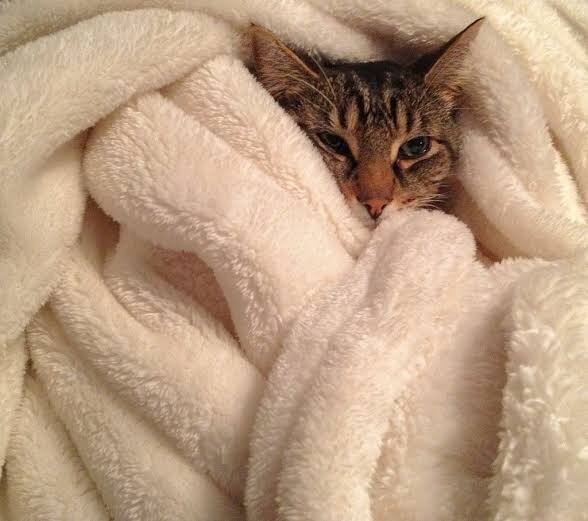
Winter and animals: The best tips for taking care of your pet in the winter
The animal has thick fur that heats its body, protects it from the harsh cold, and enhances its ability to hunt during the winter. It is characterized by short ears and legs that help preserve its body heat and contribute to its adaptation to cold conditions.
In summer, its fur changes color to brown or yellow, enabling it to camouflage itself and blend into the environment in order to sneak up on and catch prey.
The seasons of the year are diverse in terms of weather and conditions, and in the winter there is a cold weather that requires special attention towards pets. This topic reflects the importance of understanding the effects of cold weather on pets and providing appropriate care for them.
Effects of cold weather on pets:
Pets are affected by the cold weather that accompanies heavy rain, and they need heating and care. If this care is not provided, they may be exposed to the cold, which can lead to their death, and this applies especially to some animals and birds such as ornamental birds and turtles.
According to pawsatpeacepethospice, it shows that taking care of animals in winter and rainy days is not a difficult task. Although animals and birds have fur and feathers that protect them to some extent from the cold, humans' role is to provide complete protection.
If you have a pet at home, you should adhere to some tips to protect it from frost:
Warm bed :
Don't let your dog sleep on the floor, especially in the winter. Prolonged contact with cold ground can cause illness. Choosing the right bedding is important to make sure your dog stays warm. There are a variety of brushes for animals available on the market. Buy one for your four-legged friend and enjoy watching him warm up to it. You can also place the bedding in a warm place, preferably on a rug.
If you have a dog or birds and keep them outside, for example, you should bring them inside during rain and cold weather, as the cold can cause a direct impact on their respiratory system and joints.
Learn about Petaholic products for your animal's comfort
Do not shave the fur:
Dogs are lucky thanks to their thick fur, which naturally keeps their bodies warm. So, avoid shaving completely in winter. Furthermore, do not take your dog for a walk immediately after bathing him. Depending on the temperature of the area, wash with warm or lukewarm water. Let them dry inside and don't let them come out with wet fur. And remember, their natural fur will not prevent freezing on the feet, tail, or ears. So, don't keep your dog in subzero temperatures for a long time.
Put socks on your pet's feet, especially if they are small or large and weak, as their bodies are very fragile and quickly affected.
Adequate nutrition and hydration
Shelter and comfort for pets becomes even more important during the winter, as staying warm requires extra effort. Adjust your pet's diet to suit its needs during this season, making sure to include nutrient-rich foods .
Providing food and water for animals to eat gives them warmth and calms their nerves during rain and bad weather.
Make sure you have a constant supply of fresh, non-freezing water, as dehydration can be a concern during cold days. Monitor your pet's drinking volume, and if he spends long periods outdoors, use heated bowls to avoid water freezing. to get
For personalized dietary guidance, consult your veterinarian, as advice will depend on the species, size, and health condition of the animal.
Skin care and care
Cold weather can dry out the skin and damage the coat, and regular combing is essential to get rid of tangles, mats and excess fur, which contributes to keeping your pet insulated.
Use pet-specific moisturizers to prevent dry, cracked feet, and trim excess fur between your pet's toes to avoid ice buildup. Cats, in particular, can take advantage of their soft, short fur to reduce the risk of ice getting stuck in their fur.
Doing physical activity
Although there is a temptation to hibernate during the winter, pets still need regular exercise and mental stimulation.
Engage your pet in indoor play sessions to keep his mind active, make sure outdoor activities occur during warmer times of the day, and be careful of slippery surfaces to avoid injury. Adjusting the intensity and duration of the exercise depends on the age and type of your pet and its general health condition.
Health care and emergency preparation for pets
Make sure your pet has completed all veterinary examinations and received the latest vaccinations, as winter greatly increases the risk of respiratory infections.
Look for signs of cold-related illnesses and create a list of veterinary emergency numbers to ensure they are readily available in emergency situations.
Pack a winter first aid kit, including items like foot balm, antifreeze and warm blankets, so you can immediately deal with emergencies in cold conditions.
Shelter and warmth
Providing a warm and comfortable shelter is of great importance during the winter. Make sure your pet's living area is well insulated and properly equipped.
Cover the animals' bodies with a small blanket or heavy clothing to provide quick warmth.
Wrap your animal in a piece of fleece Wrap your furry friends in a warm piece of cloth. Keep them warm and comfortable while you're out on a walk or when you take them for a run. If you have a dog shelter, cover the door with a shawl and leave a small opening for ventilation.
Cover bird cages to prevent cold leakage, but leave a small opening for air to allow them to breathe.
Stay away from the room heater:
If you have a dog that moves around the house frequently, eliminate heat sources such as room heaters, etc. Dogs often seek heat during the winter when they approach any heating source. There are chances that your pet dog may come close to any radioactive object and cause burns. Avoid space heaters and have an animal proof system to keep away from any harm.
Check regularly to ensure there is good air flow. If your pets spend time outdoors, consider wearing comfortable coats to protect them from the cold.
Keep them hydrated:
Just as humans feel thirsty in winter, animals also feel thirsty. Check their water regularly, as the water in their bowl may get cold and they may not drink from it. Therefore, it is best to replace old water with room temperature water every 2-3 hours.
Don't overfeed them:
Your pet needs an extra layer in the winter, make sure it comes from warm fur and not a layer of fat. Increase your pet's food supply, provide high-quality food, but do not overfeed them.
Restricting their outside time:
Animals like humans also feel cold. So, if you have a pet at home, it is important to protect it, otherwise it may catch a cold when exposed to cold. Legs, ears and tail are all at risk of freezing depending on the region and temperature variations. Take your dog out for walks and play, but when the temperature drops, don't leave them outdoors.
Learn about Betaholic products and winter clothing with Betaholic .
Winter diseases of cats
Cold and respiratory diseases
Cats are susceptible to colds in the winter due to immune deficiency that occurs with weather changes. Some bacteria and viruses take advantage of their period of immune weakness, which leads to their multiplication and the appearance of cold symptoms, such as:
- Runny nose
- Bloody discharge in the eye
- Shivers
- Sneezing
- The appearance of sores in the mouth
- Weakness in voice
- Idleness

